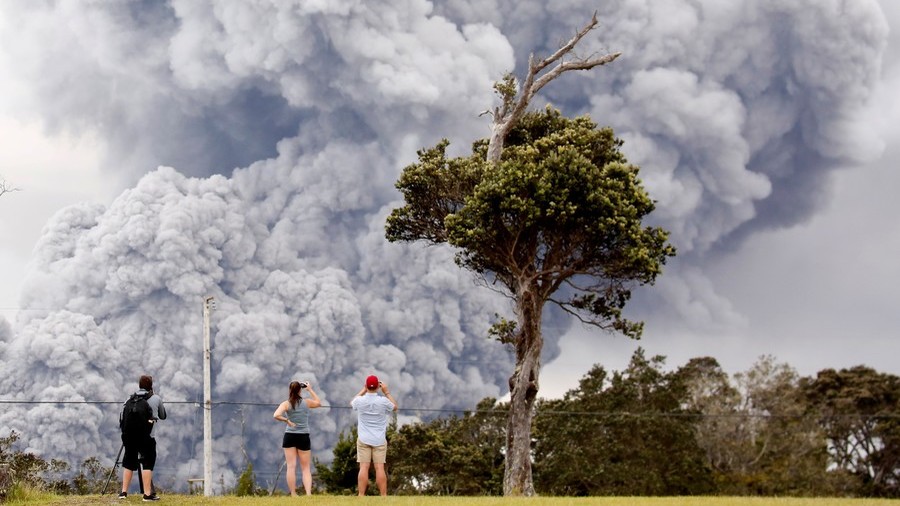Ashfall and vog are the latest of many problems coming from Hawaii’s volcano, Kilauea. When Hawaii’s Kilauea volcano first erupted two weeks ago, residents spoke of the goddess, Pele, who is said to live on the Kilauea volcano. One Hawaiian said, “If Pele comes, Pele comes. Now we’re kind of crossing our fingers to see what Pele might do next.” And in the two weeks following the initial eruption, Pele seems to be one busy goddess.
First, there were eruptions that prompted thousands of residents to evacuate. Then, fissures cracked around the volcano, releasing dangerous molten lava onto the land and filling the air with toxic sulfur dioxide.
Now, Hawaii has issued a code red due to the vog and ashfall spewing from the active volcano. Vog is volcanic smog, and it forms when sulfur dioxide gas from the volcano reacts with oxygen, moisture and sunlight, according to the U.S. Geological Survey.
The ashfall has risen up to 12,000 feet about sea level, further compromising air quality and the health of Hawaii’s residents.
For those who are exposed to high concentrations of vog, there is an increased risk for headaches, along with lung and eye irritation.
And meteorologist Faith Eherts advised that short term symptoms of vog exposure include “itchy eyes, sore throat, coughing, nausea and trouble breathing.”
However, the long-term health problems are a risk if sulfur dioxide and other pollutants in vog enter an individual’s bloodstream, leading to serious respiratory problems, like allergies and asthma.



